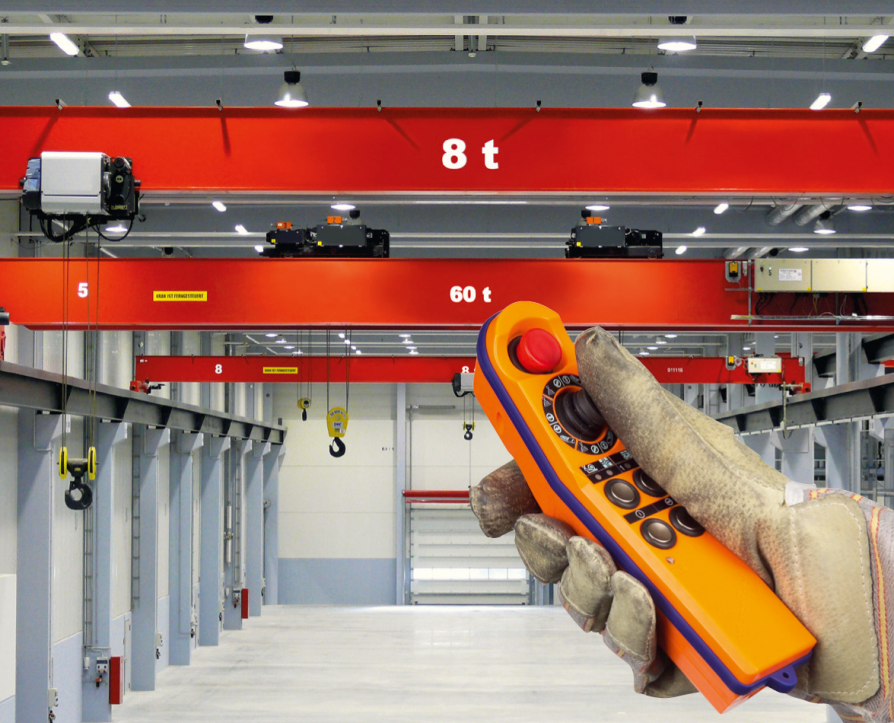)
HBC-radiomatic’s revolutionary crane operating concept
HBC‘s radiomatic pilot, a newly-developed operating concept for machinery and cranes, brings intuitive movements from everyday life to the industrial workplace, allowing for a unique operating experience.
The concept is based on an integrated inclination function. “By the horizontal and vertical inclination of the transmitter, the operator can control two machines or crane drives,” said Christian Kugler, international key account manager, HBC-radiomatic. “The speed of the drives can be controlled by the inclination angle. The more the transmitter is inclined, the higher the speed.”
An overhead crane will move in the direction of the operator’s arm movements. The radiomatic pilot offers diverse individual configuration options. For example, the inclination function can be configured for analog as well as for single- or two-step drives. The same applies to the HBC Micro Joystick, which can be conveniently operated by the thumb and enables the control of two additional machine drives.
Four single-step push buttons complete the operating concept. Two of these buttons can be used for the pre-selection of machine functions, hoist equipment, and crane trolleys or for additional features. “As a single-hand control, radiomatic pilot offers an ideal function range for standard industrial cranes, different kinds of vehicles, and much more,” said Kugler.
The pilot is equipped with a comprehensive safety package that guarantees safe working and reliable protection for man and machine, even in very specific and demanding situations. “In order to activate machine functions by the inclination of the transmitter, the operator needs to keep this operating element on the lower side of the transmitter pressed,” said Kugler. “As soon as the button is released, the respective function is stopped. When the release button is not pressed, no control commands can be activated by the inclination function when the transmitter is moved.”
The integrated haptic-acoustic feedback provides additional safety. When the release button is pressed, the transmitter vibrates and emits an acoustic signal, informing the operator that the inclination function has been unlocked. In addition, the vibration and the signal tone indicate speed changes of the respective drive. The more the operator inclines the transmitter and the higher the speed of the drive, the more the transmitter vibrates and the louder the signal tone.
The pilot comes standard with the micro drive function, which can be activated and de-activated. The inclination function and the HBC Micro Joystick both have a horizontal and a vertical axis. Other key features include radiometric shock-off and radiomatic zero-g, both of which come as standard.











